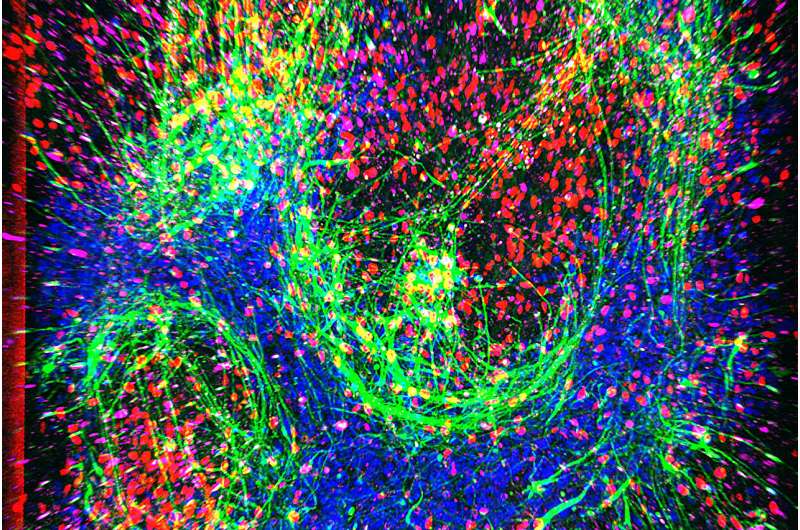In a study published in the journal Cell Stem Cell, investigators detail how they created “ALS on a chip” and the clues the specialized laboratory chip has already produced about nongenetic causes of the disease, also known as Lou Gehrig’s disease.
The work builds on previous studies where adult cells from ALS patients were reverted into stem cells. The cells were then pushed forward to produce motor neurons, which die in the disease, causing progressive loss of the ability to move, speak, eat and breathe.
In this study, the motor neurons from ALS patients were seeded into the top channels of microengineered chips. Cells that make up the blood-brain barrier were seeded into the bottom channels of the chips. The two channels are connected through a porous membrane that allows investigators to flow fluids through the chips in order to mimic blood flow.

